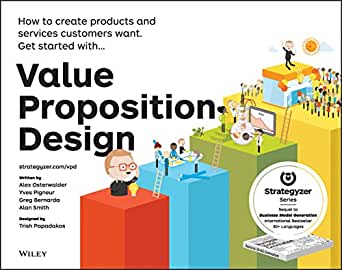Let’s learn about Value Propositions.
Without all the fluffy bullshit, the marketing bros slapping each other on the back, or trying to sell you anything you don’t want or need.
In this post (and the presentation download at the bottom), I’ll give you
- 3 Value Proposition Frameworks (to write your own value proposition)
- The 5 elements of a persuasive value proposition
- Ideas on how to stress-test or strengthen your value proposition
- Identify the best places to use a value proposition.
What is a Value Proposition?
A value proposition is a persuasive, targeted piece of copy that helps convince your prospect that your product will help them solve their pain or their problem better than the solution they're using right now.
Value propositions help customers decide whether they want to spend their time and money with you. A strong value proposition is the easiest way to make a sales argument without having a sales team in the room.
What’s the Big Deal About Having a Value Proposition?
Here’s where value propositions are most helpful
- If you’re trying to differentiate your product or company
- If you’re in or moving into a competitive marketplace
- If you’ve ever struggled to explain what your company or product does and why your customers should care.
Value propositions do a lot of heavy lifting, and they can help support all of your marketing efforts.
The 5 Key Characteristics of a Strong Value Proposition
- Unique - You can't go out and copy a value proposition from your competitors because your value proposition needs to be unique enough that your competitors can't copy it from you.
- Desirable - Your value proposition needs to be desirable to your ideal customer. They have to want the value that you provide.
- Succinct - You need to edit your value propositions to make them easy, read, without any fluffy jargon, any unnecessary words, and make them easily consumable by your ideal customer.
- Memorable - When your ideal customer reads your value proposition, they need to associate the value that they're getting from using your product or service with your name. So the next time they see your name out in the wild, they say, “Oh, you do that one thing and provide this type of value. That's where I know your company/product from.”
- Specific. Your value proposition must be specific. A weak value proposition may claim that your company delivers “value” to your customers or that your product “increases revenue.” But there are a lot of products and companies out there that increase revenue. So be specific about how you would increase revenue for your customers.
Ways to Test the Strength of Your Value Proposition
Here’s how to stress test or determine the strength of your value proposition.
- Put on your empathy cloak and put yourself in your customer's shoes and ask, "What's in it for me? Why should I care?" If you don’t have a good answer, you need to strengthen your value proposition.
- Your value proposition also needs to be specific and tangible.
- It also needs to help solve the most significant pain point or the biggest aspiration of your ideal customer. (This one should be a yes or a no question.) If it's no, you need to edit and add more value to your value proposition and reconnect with your ideal customer.
- Test your value proposition with your ideal customer segment. For example, you could do a 5-second copy test through different usability companies, include it in a survey, an A/B test in a social media ad, or even use email to test to see which email campaign gets the most significant open and click-through rates.
Value Propositions are not Mission Statements
A mission statement is not the same thing as a value proposition.
It's unfortunately common to see mission statements and value propositions get mixed up.
Here's the difference.
A mission statement is specifically targeted to employees, key stakeholders, and other internal people and entities. So, for instance, an investor would be interested in the mission statement, and an employee group would be interested in a mission statement, a customer, not so much.
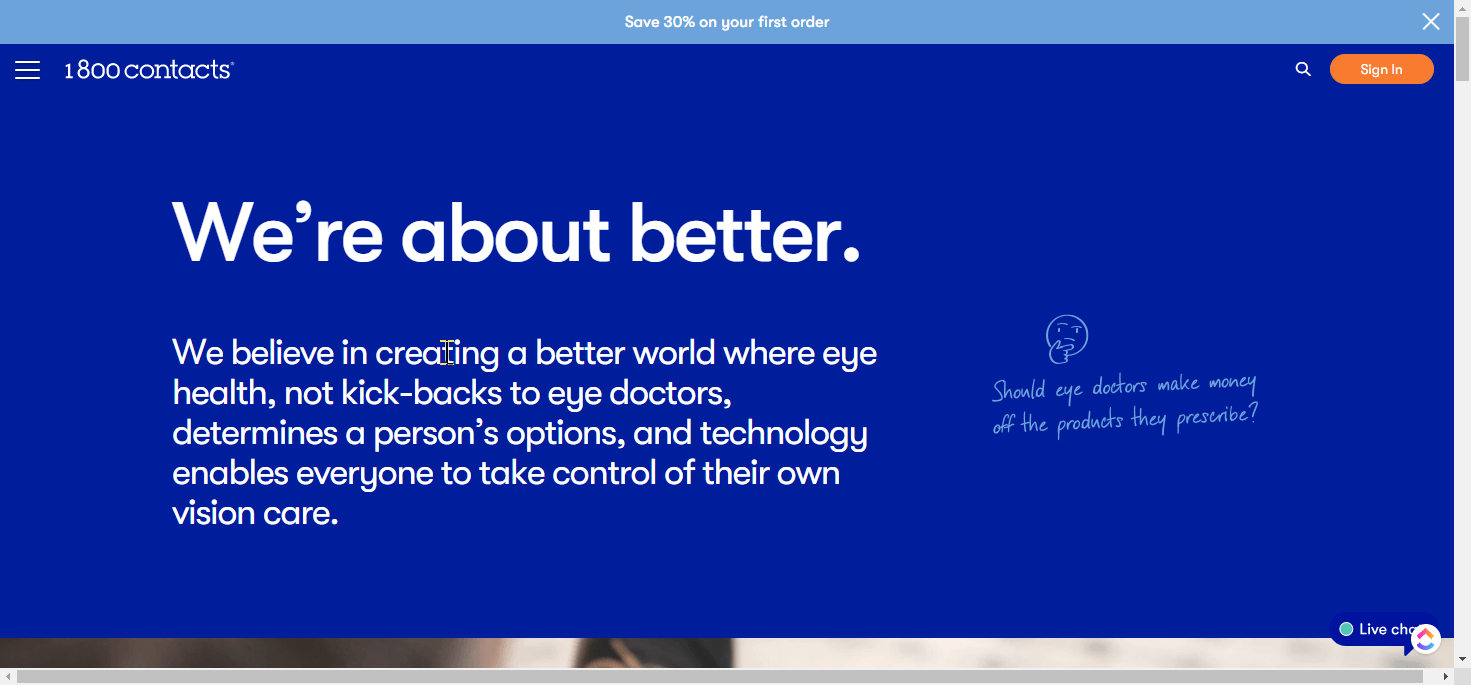
The dead giveaway for a mission statement is any statement that starts with "we believe" if you see a message that begins with “we believe,” it's a mission statement. It's not a value proposition. It's a mission statement because it targets the internal audience for the company and not the external audience, including customers.
- Value propositions target customers or an external audience.
- Mission statements target internal audiences.
Value Propositions Are Not Taglines (Usually)
Another common misperception about value propositions is that they’re the same as taglines and slogans.
Taglines and slogan’s job is to hook or grab attention.
They're typically sticky, short, memorable, and frequently used in advertising.

Example: The De Beers tagline is "A Diamond is Forever.”
Sometimes taglines can be overlap with value propositions, but typically taglines and slogans are used almost exclusively as memory hooks and in advertising.
How to Kill Your Value Proposition Quicker Than a Cockroach in a 5-Star Hotel
Value propositions can be tricky to create. Sometimes you need to bring in other people to bounce ideas off of, or internal key stakeholders want to create a value proposition that gets used throughout marketing, especially at a company level. Here's how you can go sideways with your value proposition
Your value proposition tries to do too much.
- You try to jam in ALL of the products, ALL of the features, ALL of your customer pains, and ALL of your customer aspirations into your value proposition.
- If you try to make it do too much, it won't do anything at all. I promise.
- Be specific, prioritize and let some things go in favor of focusing on the products, features, and customers that are more important.
Your value proposition focuses on features (not benefits).
- “All hat and no cattle,” as the saying goes.
- For example, if you talk about the patents your company holds in your value proposition, which may be unique to the business, it doesn't tell the customer WHY they should care. So, unless your patent is directly related to the specific outcome of using your product or service, leave it out of your value proposition and focus on the outcome instead.
Your value proposition uses industry or company jargon.
- Sometimes internal key stakeholders are hot to trot on using the latest terms and abbreviations, but your customers are saying, "What does that even mean?"
- Sometimes it's helpful to use industry jargon to gain credibility, but including it in your value proposition depends on your customers. If your customers are talking in industry terms all the time, I would say it's safe to include those terms in your value proposition. On the other hand, if your customers are NOT using industry jargon or abbreviations, don’t include them in your value proposition.
Your value proposition reads like a Charles Dickens novel (it’s too long).
- How long is too long for a value proposition? It depends, but your customers will always tell you how long it needs to be.
- Try to make it as short as possible without losing any significant meeting. And don't be afraid to go through several different rounds of iteration to make sure that it's succinct, specific, memorable, desirable, and unique. Remember those five key characteristics addressed earlier? Yeah, those things need to be in there.
Edit and Iterate Your Value Propositions
It takes some effort to create a great value proposition, and it takes a lot of iteration.
Don't be afraid to write something and then back away from it for a little bit, and then come back to it and do another editing round.
Don't be afraid to have other people take a look at them. Just be careful about the feedback that you get and the feedback that you incorporate into a value proposition.
Again, you don't want it to be too long. You don't want to have too much industry jargony speak. You don't want to focus on the features and not the outcomes. And don't try to do too much with your value proposition. It will weaken your value proposition into obsolescence.
All Shapes and Sizes of Value Propositions
There are all kinds of different value propositions.
- Company-level value proposition - help you differentiate from the competition.
- Customer-segment specific value propositions - help those customers move from just being aware of your product to a place where they're ready to pull out their credit cards and smash the buy button.
- Product-level value propositions - help increase interest in your products, especially if you have a variety of products and you can create a
- Feature-level value propositions - help increase awareness and interest in your product.
- Here’s a big caveat for feature-level value propositions, don’t use the feature set as an excuse to create another bullet point list of features. Instead, always focus on the benefit of those particular features.
- For instance, your software may build reports in Excel as a feature; this doesn't communicate any value. When you say our software helps you tell a story with your data, the value comes when using a single click.
- The value is expressed when you move past the feature of "build reports in Excel." to the outcome of that feature which could look like, “We help you tell a story with your data.” That's where the value in your value proposition lives.
Where to Use Value Propositions in Your Marketing
Once you’ve written all these beautiful value-driving pieces of copy - what do you do with them? Where should they live? Here are just a few ideas:
- The hero section of your website homepage page, or (the very top section of your website)
- Sales and landing pages
- Product and category pages
- Emails
- Social media, especially in headlines (It's a great A/B testing opportunity for paid social media campaigns. So don’t sleep on that.)
You can use a value proposition anywhere you need to convince a prospect that your product is better than the solution they're using now, even if they're not using any solution.,
So here are a couple of examples in the wild.
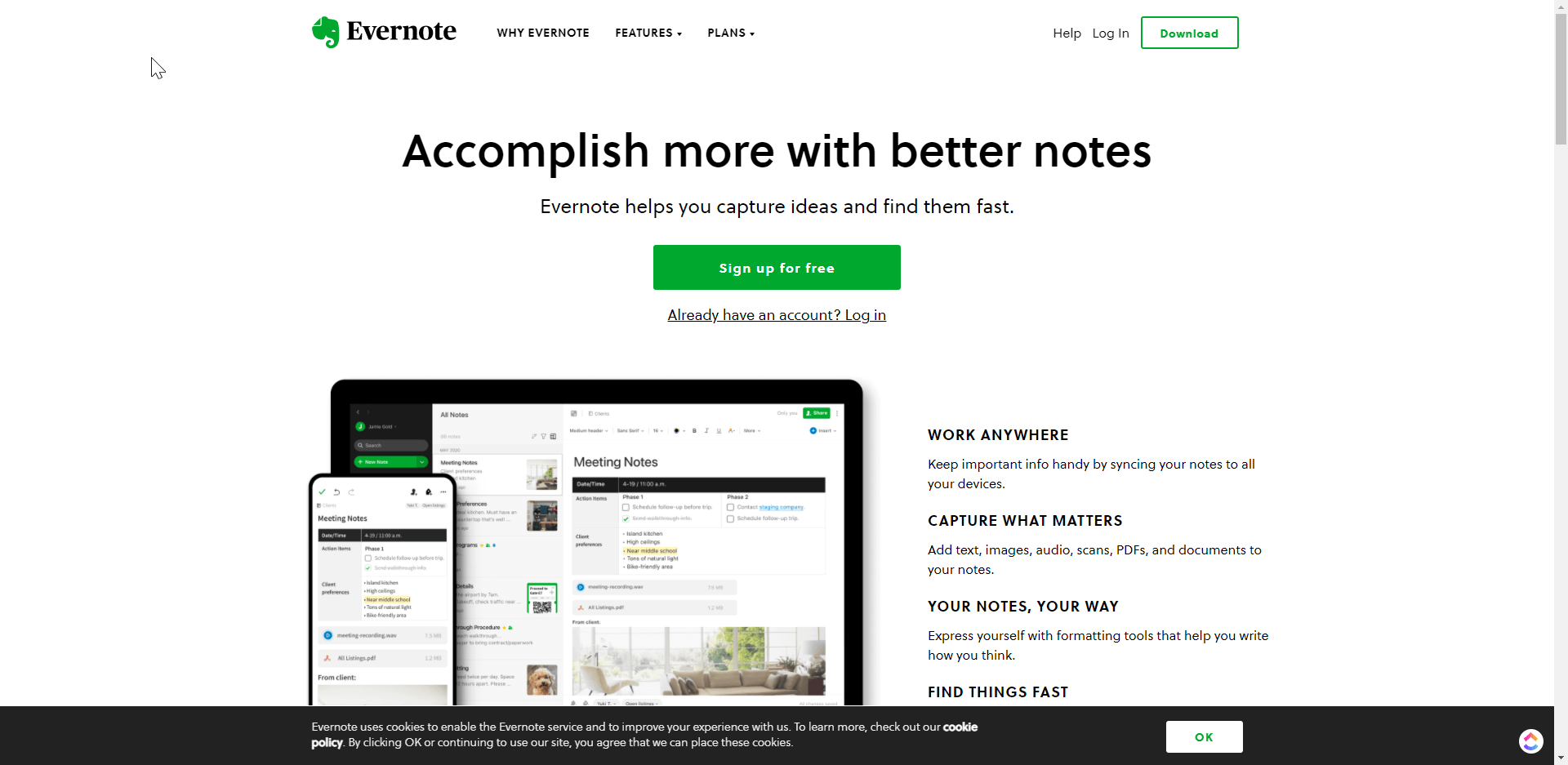
Evernote’s homepage literally tells you that you can accomplish more with better quality notes. They're not saying, “Oh, we're a software company that helps you capture all of your notes.”
They tell you the specific value that you get by using their software.
- You can find your notes faster.
- You can take better quality notes, and you can accomplish more because you're not searching for your notes that you wrote down in that notebook that you left at home.
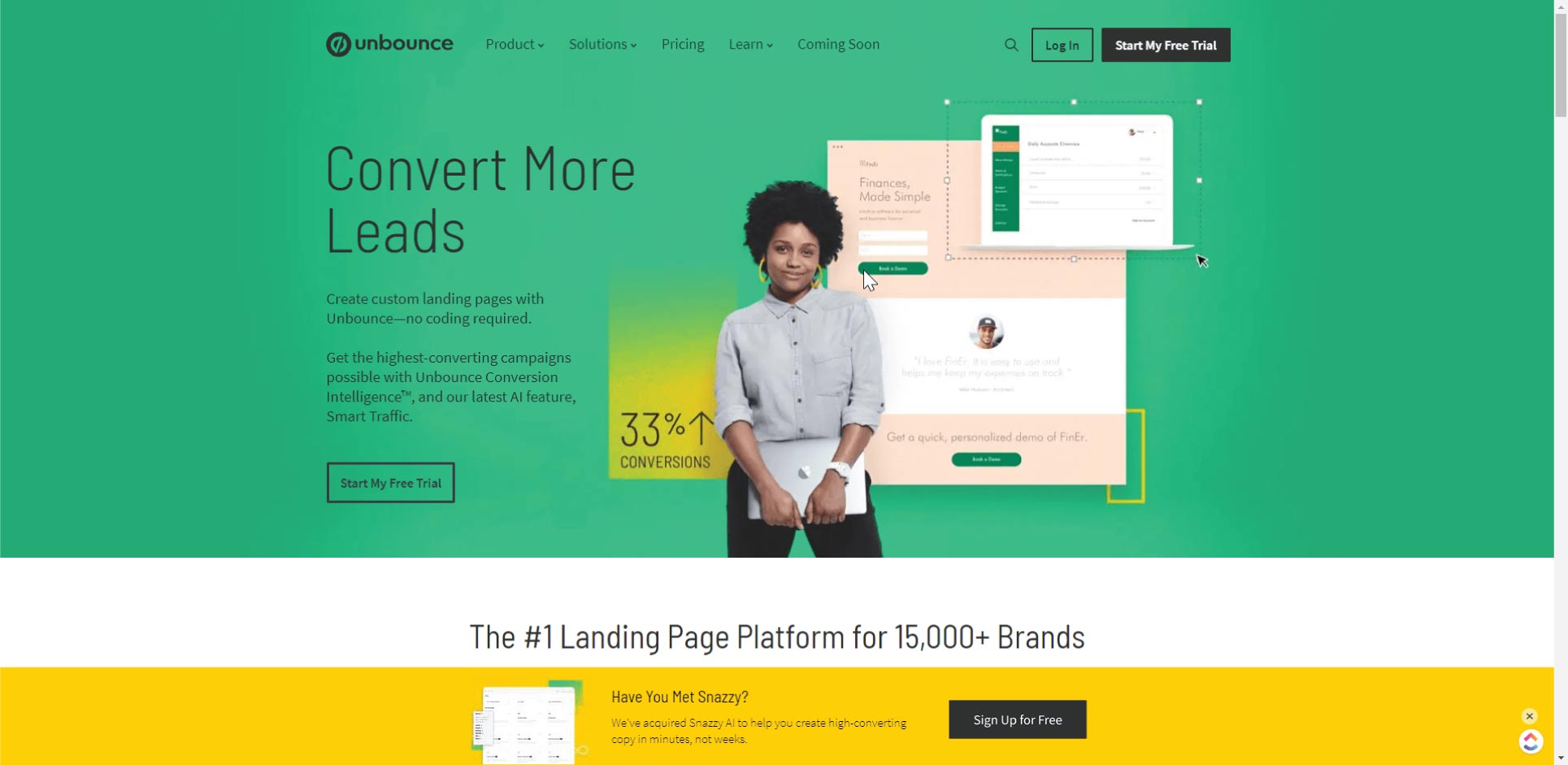
Here's another example, Unbounce. This homepage is interesting because it vacillates a bit between a tagline and a value proposition. But they are starting with the value; their customers want most to convert more leads.
They don't lead with, "Hey, we're the software landing page solution. That's been number one on Gartner's list for three years running," because their customers don’t care about that. Their customers care about converting leads, and that's the headline they chose. They describe the outcome that their customers want most and use it as a hook to get that attention and get that engagement with their website for their product.
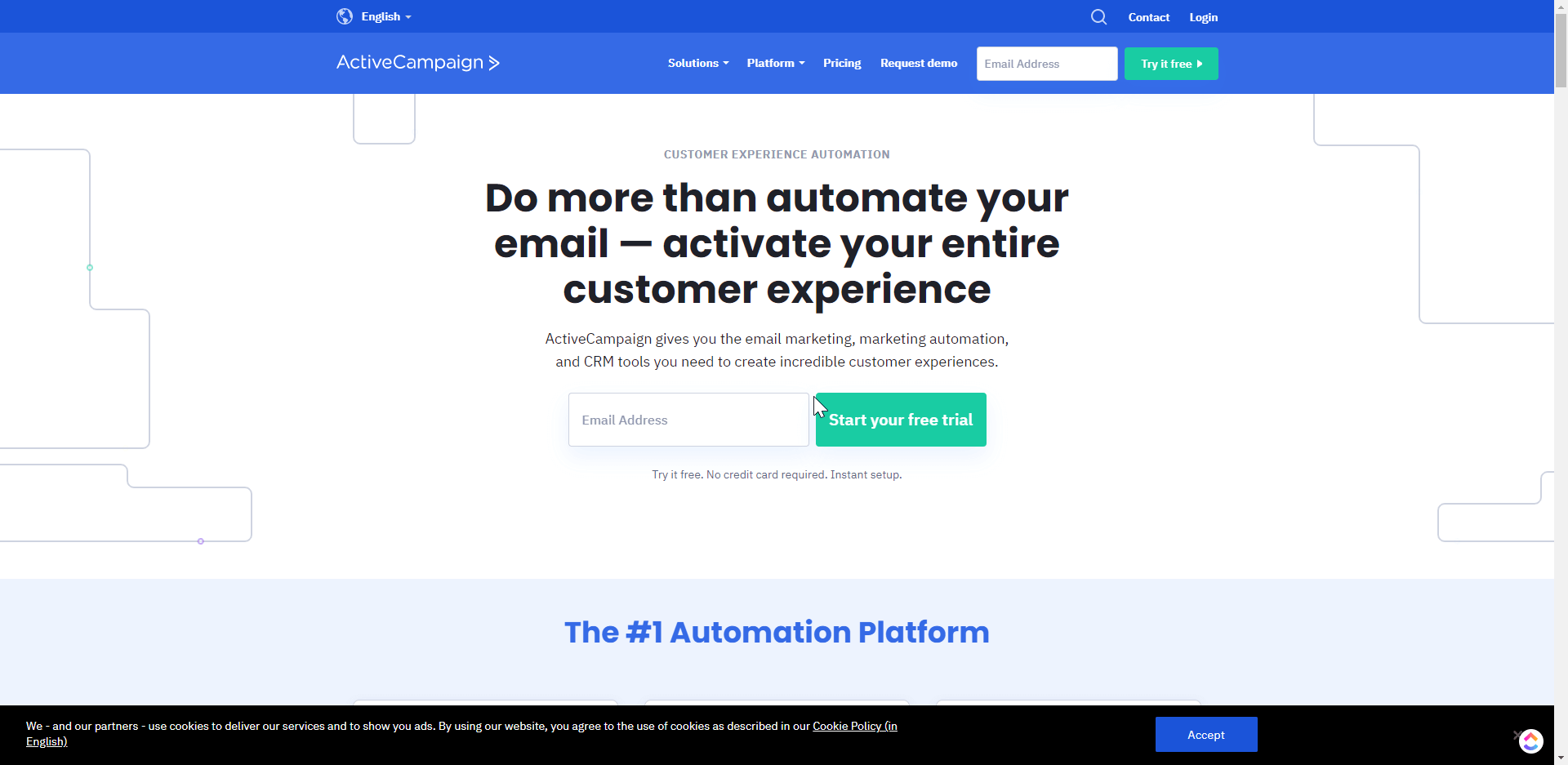
Another example is Active Campaign’s homepage. They’re an email service provider.
Active Campaign focuses on a particular customer segment. They assume that everybody knows, or the people who are coming to their website know, that they are an email service provider for marketers. So they’re focusing on a product-aware customer segment, someone who knows what Active Campaign does and who may be comparison shopping for the best email service provider.
Active Campaign moves beyond a basic explanation of their services and focuses on HOW their services benefit their customers. “We can help you activate your entire customer experience.” That's pretty powerful.
How to Write Your Value Proposition - The Information You Need
Here’s the essential information you need to start writing your value propositions.
Ideal customer profile/customer segment.
It doesn't matter if you’re writing a company-level value proposition or a feature-level value proposition. You need to know who your audience is, and you need more than just demographic information.
You need qualitative data, and you need voice of customer data.
You need to know the words, phrasing, tone, and emotions that your customers use when looking for a solution like yours. You have to channel those words and emotions to craft a value proposition.
A list of competitors.
This one's a little bit sneaky. Your list of competitors can also include Excel, sticky notes, or even choosing nothing at all and staying with the solution they have. Don't forget that people have been using notebooks forever. For example, people have been using sticky notes since the 1980s.
Your prospects are using solutions that aren’t in your standard competitive set. So don’t forget about these options.
Top points of value or outcomes.
You also need to understand the top two or three value points your competition doesn't have or that your ideal customers want most.
Your company and product can't be all things to all people, and neither can your value proposition. So you have to be selective, understand who your customers are, and understand what they want most from you to start writing your value propositions.
How to Write Your Value Proposition - 3 Frameworks to Get Started
These frameworks are like Mad-Libs. Simply replace a few words in the brackets, and you have an excellent place to start editing.
I highly recommend that you edit and iterate to create a concise version anytime you use a framework. Frameworks are starting points.
Framework #1
Our [products/services] helps [customer segment] who want to [ jobs to be done] by [verb - avoiding/reducing] and [verb -increasing/enabling] unlike [competing value proposition].
Here’s what this framework could look like for a training services company
"Our training and accountability program helps entrepreneurs who want to build their businesses by reducing confusion and overwhelm and increasing productivity, unlike other programs that try to DIY a solution with worksheets."
The next step would be to add a little flavor with some voice of customer data and edit the framework for specificity, uniqueness and shorten it up a bit.
Framework #2
The [adjective] way for [customer segment/ICP] to [complete job], [benefit/outcome].
"The no-brainer way for content writers to turn a big list of ideas into blog posts, articles, and ebooks, faster."
This feels like a solid start, and that an opportunity here to do a lot more editing and add some specificity or replace the “faster” with something your ideal customer wants more than speed.
Framework #3
We help [customer segment] do [thing they want most] doing [product benefit].
Simply replacing the words on this framework results in something that doesn’t read naturally, so editing for comprehension is the first step in optimizing this value proposition.
"We help [small agencies] do [communicate seamlessly with their clients] doing [on any device]."
There’s also an opportunity to make the entire piece of copy more concise and feature-specific.
"Communicate seamlessly with clients on any device."
The trick is to make your value proposition mean something to your audience and make sure it’s contextually relevant.
Value propositions are fantastic pieces of copy that can transform your marketing.
Value propositions can help you:
- Differentiate your product or service.
- Filter right-fit prospects to boost customer quality (because customers are not all equal. Some customers are absolute Rockstars for your company, and then you have customers who are just a pain in the ass that you'd be better off without).
- Attract and hold the attention of your ideal prospects.
- Move your ideal prospects to a ready-to-buy state of awareness, where they're ready to smash the buy button.
- Align the internal story or description of your product with your employees and your sales staff.
Value propositions have the potential to be the hardest working sales member that's not even on the payroll if you give them a chance and test them with your customers.
Download the Free Marketing Friday Presentation
You'll also get notified the next time a Free Marketing Fridays session drops
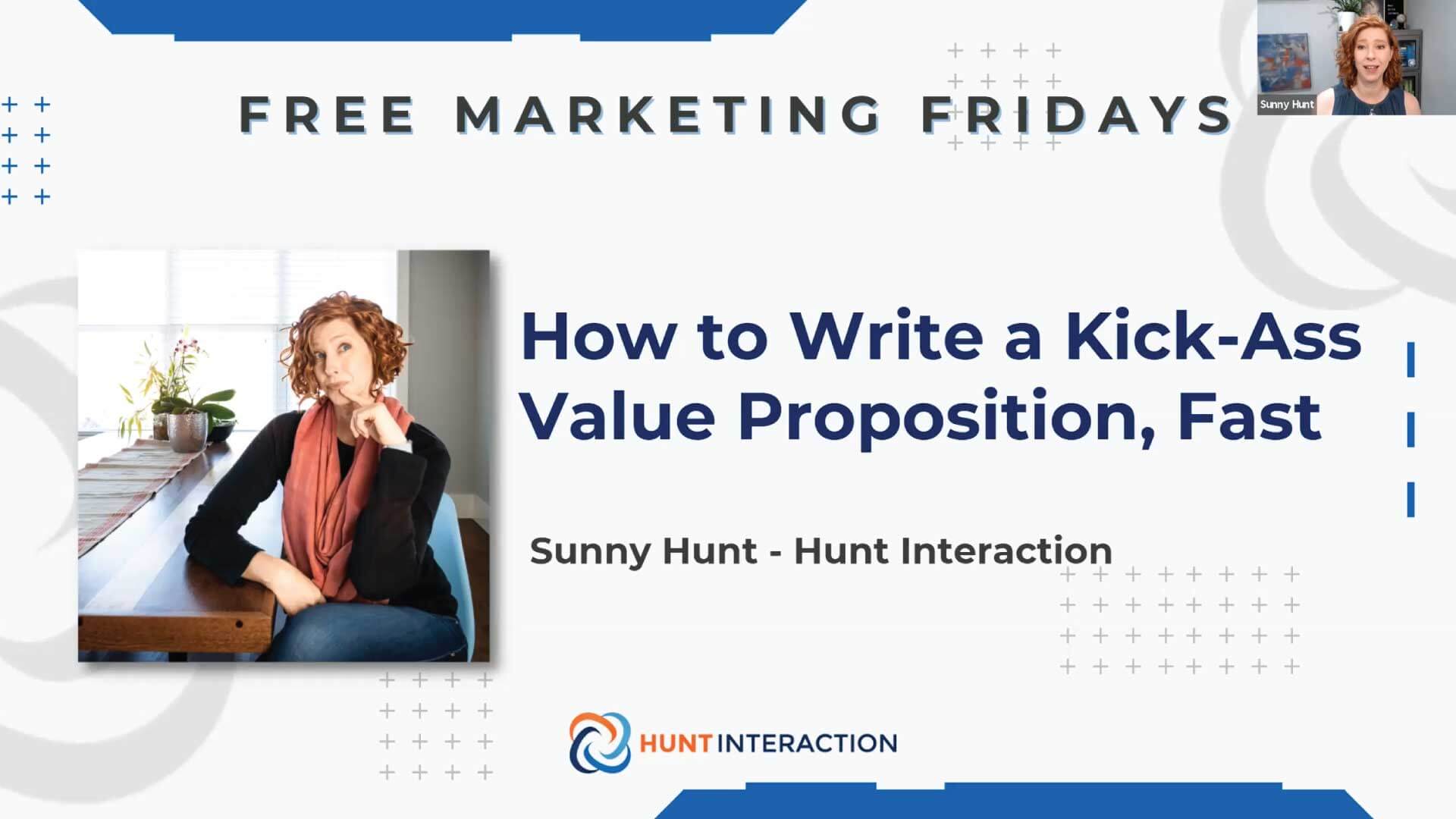
Additional Resources*
"Value Proposition Design"
by Alexander Osterwalder is a rich resource if you want to get really deep into the entire front to end process of developing and implementing value propositions for your company.
*may include affiliate links

